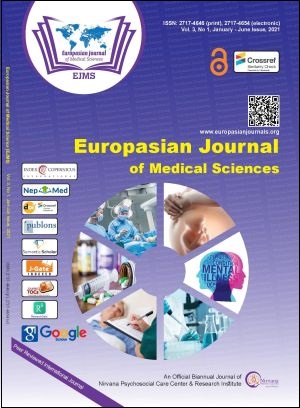Profile and Outcome of Snake-bite Envenomation: in Far-western Province of Nepal: An Observational Hospital-based study
Abstract
Background: Snakebite is a well-known medical emergency and a cause of hospital admission with significant mortality in our country. So, this study aims to find out the status and outcome after the envenomation of snake bites in the Farwest Provincial hospital of Nepal.
Methods: This is a prospective observational study from 15th April 2018 to 14th April 2019. All the snake bites presented to the hospital were recorded and observed till discharge, death, or referral. Case management was done as per the WHO guideline 2016. Ethical permission was taken from the hospital and informed consent was taken from each participant. The data were entered in Microsoft Excel and analyzed using SPSS and data analysis was done with appropriate descriptive statistical tools.
Results: A total of 362 snakebites were admitted to the emergency department of this hospital during one year period, among them, 71% were non-poisonous, and the remaining 29% were poisonous. There were 17 deaths out of 362 snakebites with a case fatality rate of 12 %. Among poisonous snakebites, 36% were Krait. Major clinical features of envenoming were ptosis, nausea, vomiting, pain abdomen, parotid tenderness, numbness, blister, and bleeding in the bitten parts. 86% of poisonous bites were given 100ml vial of snake venom antiserum. Few cases required additional 10 vials (100ml) and 13.5% required mechanical ventilation support for respiratory paralysis. There was no mortality in the Intensive Care Unit and ward.
Conclusion: Snakebite is a seasonal life-threatening emergency public health problem in the Farwest Province of Nepal. There is high mortality of snake bites without intervention and excellent outcomes after proper intervention at the time were observed. Community awareness and strengthening health systems are major activities to be done to reduce the burden of Snakebites cases.
Downloads
Downloads
Published
How to Cite
Issue
Section
License
Copyright (c) 2021 Sher Bahadur Kumar, Kiran Kumar Khanal, Laxman Bhusal, Kapil Amgain, Shuresharaman Puri, Ratna Singh

This work is licensed under a Creative Commons Attribution 4.0 International License.
The author(s) retain the ownership of the copyrights for their work published in EJMS without any restrictions. Upon submission, the author(s) grants EJMS a license to publish, including to display, store, copy, and reuse the published content.
License to Publish
By submitting a manuscript to EJMS, the author(s) grant the journal a non-exclusive license to:
- Publish and distribute the content in all formats, media, and platforms (both existing and future), while identifying EJMS as the original publisher.
- Reproduce, display, and store the content in both print and online formats, including institutional and digital repositories.
- Translate, adapt, and summarize the work, including reprints, extracts, and abstracts.
- Develop derivative works based on the original content.
- Include the work in electronic databases and provide links to third-party materials.
Creative Commons Licensing
In addition to EJMS’s publishing rights, authors grant third parties the right to use, share, and distribute their work under the Creative Commons Attribution 4.0 (CC BY 4.0) International License. This allows unrestricted use of the content, provided proper attribution is given to the original author(s) and the journal.

